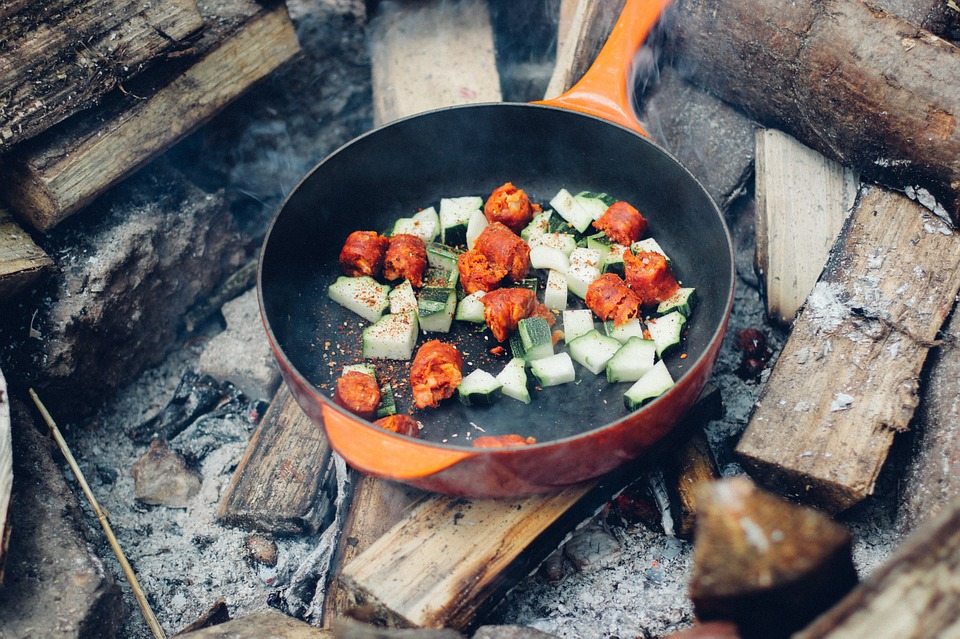
The Do’s and Don’ts of Cooking in the Backcountry
You’re about to set foot outdoors for a thru-hike, a backpacking trip, or even a weekend camping. You’re no doubt going to be cooking while you’re on the trail. You can’t wait to see the work your cooking stove can do, and how the food will actually taste after being made on a portable stove. Hopefully, everything will go according to plan. That is, of course, if you’re well aware of the do’s and don’ts of cooking in the backcountry:

Do:
Unfortunately, cooking in the backcountry isn’t always an easy task. It does take experience before you’ll get it right every time. That being said, there are a few steps you can take to make sure you won’t have any significant problems, no matter how obvious these tips may seem.
Check your fuel: Do not ever leave your house without knowing how much fuel you have. This goes especially for canister stoves, where you can’t accurately gauge how much fuel you have left. To heat a cup of noodles, it usually requires 2 cups of water. You can typically get 60 cups of water from 8 oz of fuel. Also, some stoves will use more fuel than others. Be on top of this before you head out.
Check valves and fuel-lines before igniting: It’s essential that you check for any leaks before lighting.
Bring storm-proof matches: Although stoves are supposed to ignite on their own, the Piezo igniters can fail, especially in a bad storm. Bring matches just in case.
Pre-cook and dry pasta: While it’s not a such a big deal to have to boil and cook pasta on the trail, it would be a huge time-saver to pre-cook and dry out the pasta before your trip. This way, when it comes time to eat it, you just have to add boiling water.
Plan meals before: Many backpackers prefer to have all their meals planned and packed before heading out. Others at least have a very good idea of what they’re going to cook. Typically, hikers need a higher daily intake of calories than usual to keep up with how much they are burning off each day. Whether you’re pre-packing your meals or bringing them along to cook later, make sure you have enough.
Use alcohol for priming and a windscreen for a liquid-fuel stove: Liquid-fuel stoves require priming before cooking, which pressurizes the stove and preheats the burner. Using alcohol will keep it soot-free. Use a wind-screen to cook without problems.
Use a lid: Covering your pot is necessary when cooking in the backcountry as it helps lower the risk of not having dinner…or losing a finger.
Use the most level surface: Cooking on an uneven surface can result in fuel leakage and even fires. Find a hard, even surface to cook.
Empty your tank before storing: If you’re going to be storing your stove for a while after your trip, empty the fuel tanks in order to prevent a fire risk.
Bring a backup: Stove not working no matter what you do? Always have enough back-up foods which don’t need to be cooked; enough to last you until you can solve your problem. Granola bars, nuts, dried apricots, or even pieces of cheese, and tortillas are good choices.

Don’t:
If not done properly, cooking can be dangerous. It needs to be handled with care, just as much as anything else. Cooking isn’t just about taking precautions when it comes to your stove, it also means remembering the entire process that comes with getting food from your house and into your stomach.
Cook inside a tent: It might seem obvious, but if it’s raining and cold outside, this tip might slip your mind. Cooking inside a tent is a huge hazard, as it can increase the risk of a fire and even carbon monoxide poisoning.
Fill a fuel tank to the brim: This goes for liquid-fuel stoves. Fuel expands when it heats up, so filling a tank to the brim could cause a lot of problems.
Use a windscreen with a canister stove: Though they should always be used with liquid-fuel stoves, a windscreen should never be used with a canister stove.
Forget the protein: While it might be easy to stick to basic carbohydrates while on the trail, it’s necessary to have some protein in your diet in order to stay energized. Believe it or not, there are a lot of meats you can dehydrate. There are also meats that are already dehydrated and packaged, such as products from Mountain House.
Underestimate your cooking abilities: Cooking on the trail is a necessity. No matter how bad your cooking experiences may have been in the past, you’re going to need to step up to the plate. No need to worry. When you’re in the wilderness, any meal concoction will really suffice. You CAN cook, and you WILL cook, because you have to.
Forget the desserts: Many backpackers focus so much on the cooking aspect, that they forget how many delicious desserts can be brought along or made while on the trail. Just because you’re in the outdoors doesn’t mean you need to starve your sweet tooth!

Keep in mind the do’s and don’ts of cooking in the backcountry, and you’ll be ready to go!













